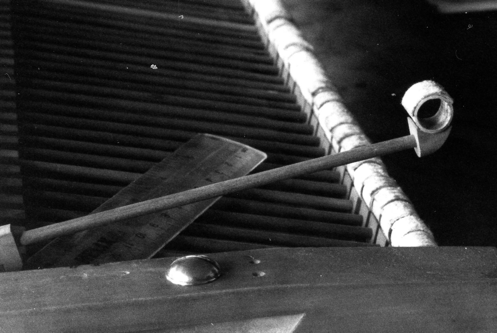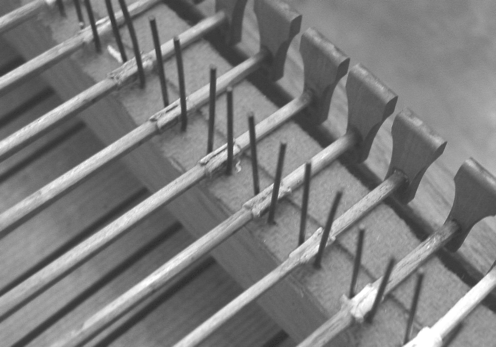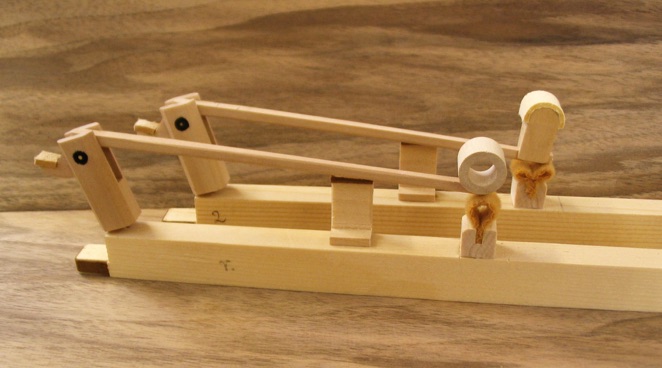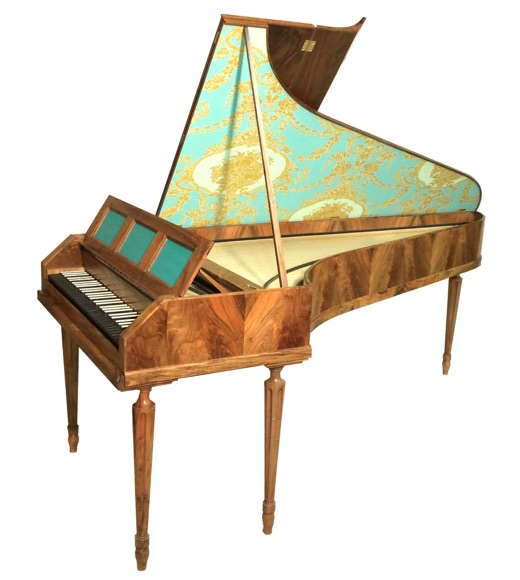In 2013 I built a copy of the 1783 Stein fortepiano in Leipzig for the Institut Européen de Musique Ancienne in Vannes, France. The piano has two alternative keyboards and actions from which the player can use: an action with solid leathered hammers as the original has, and a second action with the Silbermann/Cristofori type of hollow wooden hammers but with no leather capping; a type of action Stein is said to have made around 1780. This short article explains the background.
Through a translation of an article of 1709 by Maffei, describing Cristofori’s pianos, the invention of the piano became known in Germany. Gottfried Silbermann of Freiberg –who must have seen an original Cristofori piano or one by his follower Ferrini – followed Cristofori’s action design in a number of instruments he made around 1750. The hammers of these ‘Piano et Forte’ as he called them each had a capping of elk leather. The sound of Silbermann’s pianos was described as ‘kugelrund’ (as round as a bullet). Several of his pupils (among them his nephew Johann Heinrich Silbermann in Strasbourg and Friederici in Gera) build instruments in his style. Especially Heinrich’s instruments were well known: there were at least four of his pianos in Paris in 1761, one of them belonging to the Grand dauphin.
Johann Andreas Stein was a pupil of the Strasbourg Silbermanns in 1748/49 although he was probably not influenced by the Silbermann piano action until later. In any case, Stein’s earliest surviving fortepiano, the piano in the 1777 vis-à-vis harpsichord-piano in Verona, has many aspects in its design that must have been derived from pianos by a Silbermann (perhaps those of Gottfried, a generation older, or those of Johann Heinrich, Stein’s contemporary). The features that betray this influence include the inverted wrest plank, the type of dampers and the hammer rail. The action of the piano in Stein’s 1777 instrument is however of a very different design from the action of the pianos by the Silbermanns. There are solid, bare wooden hammers with no covering and there is a ‘moderator’ (the Pianozug): strips of leather or cloth (the original has not been determined, but leather seems more likely) can be inserted between the hammers and the strings, giving the instrument a more muted sound. This feature is not derived from Silbermann and comes from another style, as important for the development of the 18th-century piano as the Cristofori/Silbermann style.





